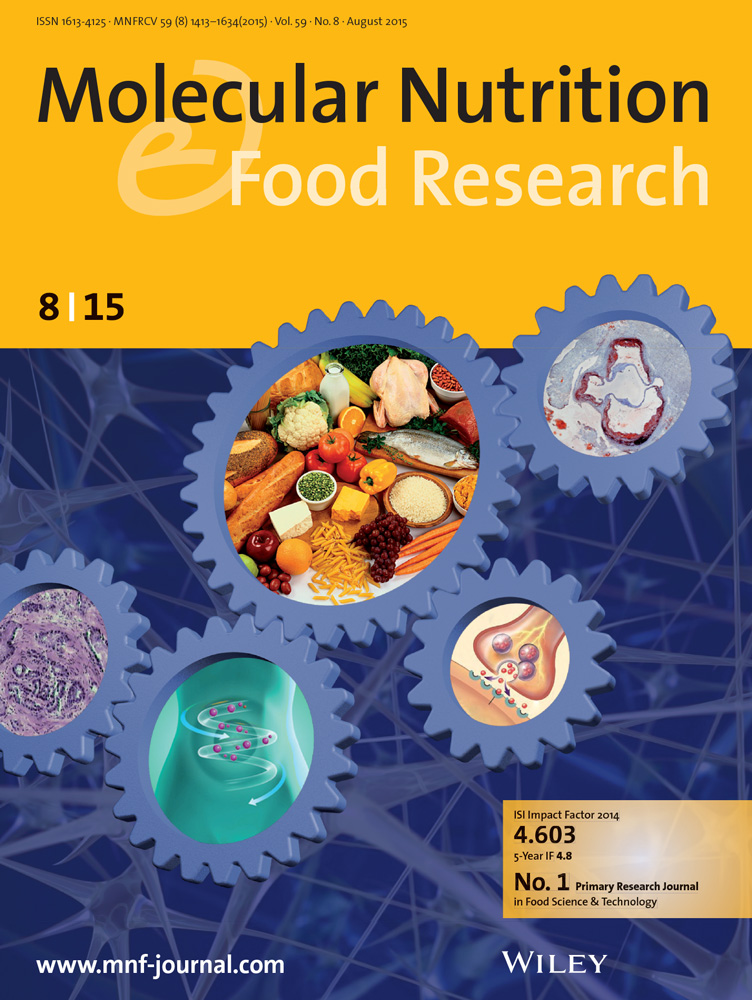大鼠模型中的餐后代谢、炎症和血浆胆汁酸动力学:对转化研究的启示
IF 4.2
2区 农林科学
Q1 FOOD SCIENCE & TECHNOLOGY
引用次数: 0
摘要
餐后时期是评估代谢表型的一个机会窗口,其研究越来越受欢迎,因为当饮食挑战与代谢组学方法的应用相关时,可以发现丰富的信息。胆汁酸(BA)最近被确定为信号分子,在食物摄入后显示循环水平的重大变化。在这方面,将BA餐后动力学与其可能的代谢作用联系起来的信息仍然存在空白。本研究旨在建立一种研究餐后代谢和炎症的小鼠模型。在摄入能量密集膳食前后,雄性Sprague - Dawley大鼠的血浆和肝脏代谢标志物、炎症和BA水平的变化进行了评估。大鼠餐后循环BA水平发生改变,以胆酸为主(36%)。这些变化伴随着能量代谢中间体和炎症标志物的变化,正如食物摄入两小时后肝脏NF - κB蛋白含量(一种关键的炎症转录因子)增加四倍所证明的那样。尽管存在固有的物种特异性差异,但该小鼠模型代表了研究餐后调节能量代谢的有前途的工具,为未来研究BA在餐后代谢反应中的作用建立了开创性的框架。本文章由计算机程序翻译,如有差异,请以英文原文为准。
Postprandial Metabolism, Inflammation, and Plasma Bile Acid Kinetics in a Rat Model: Implications for Translational Research
The postprandial period is an opportunity window to assess metabolic phenotype, and its study is gaining popularity due to the wealth of information that can be uncovered when a dietary challenge is associated with the application of metabolomics approaches. Bile acids (BA) were recently identified as signaling molecules that display major changes in circulating levels following food intake. In this regard, a gap of information remains linking BA postprandial kinetics with their possible metabolic effects. This study aimed to characterizing a murine model for investigating postprandial metabolism and inflammation. Changes in plasma and hepatic markers of metabolism, inflammation and BA levels were assessed in male Sprague‐Dawley rats before and after the ingestion of an energy‐dense meal. Rats display postprandial alterations in circulating BA levels, with cholic acid constituting the predominant species (36%). These changes are accompanied by shifts in intermediates of energy metabolism and inflammatory markers, as demonstrated by a four‐fold increase in hepatic NF‐κB protein content, a key inflammatory transcription factor, two hours after food intake. Despite inherent species‐specific differences, this murine model represents a promising tool for studying postprandial modulation energy metabolism, establishing a pioneering framework for future investigations into the role of BA in postprandial metabolic responses.
求助全文
通过发布文献求助,成功后即可免费获取论文全文。
去求助
来源期刊

Molecular Nutrition & Food Research
工程技术-食品科技
CiteScore
8.70
自引率
1.90%
发文量
250
审稿时长
1.7 months
期刊介绍:
Molecular Nutrition & Food Research is a primary research journal devoted to health, safety and all aspects of molecular nutrition such as nutritional biochemistry, nutrigenomics and metabolomics aiming to link the information arising from related disciplines:
Bioactivity: Nutritional and medical effects of food constituents including bioavailability and kinetics.
Immunology: Understanding the interactions of food and the immune system.
Microbiology: Food spoilage, food pathogens, chemical and physical approaches of fermented foods and novel microbial processes.
Chemistry: Isolation and analysis of bioactive food ingredients while considering environmental aspects.
 求助内容:
求助内容: 应助结果提醒方式:
应助结果提醒方式:


